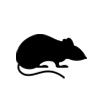Death is an odd thing to be chipper about. LA-based mortician, ‘death positive’ advocate and YouTube star Caitlin Doughty is definitely chipper, though: she has that extreme chirpiness that I’m going to assume is compulsory for anyone living in Los Angeles. And yet she is not flippant: in amongst her ebullient humour is a serious intellectual and moral engagement with issues of death, grieving, funeral customs, end-of-life care and spirituality. I felt immediately drawn to her. If it were possible to pre-book one’s own mortician, I would consign my corpse into Doughty’s hands without a second thought.
Doughty was interviewed by local coroner Marcus Elliott, who did a good job of asking interesting questions and then giving Doughty plenty of space to answer them. (I must also give him props for his dapper blue cravat.*) Doughty entered the death industry as a young woman fresh out of her medieval history degree. “My relationship with death is the best relationship of my life.” When she was 8, she had seen a small child fall from a balcony, and “the spectre of death began to haunt me … [but] dialogue with my parents [on this topic] was not open”. She spoke about the ways in which children are curious about death, but we tell them that their interest is dirty, or weird, or wrong. This is one of the many things Doughty wants to change.
Another is the way that the professionalisation of death has distanced us from the dead body. A century ago in the Western world, the family cared for the corpse; dead bodies lay in state in the home and then were carried out for burial. Only in the 20th century have we developed a professionalised class of death workers, who come and remove the corpse from the home (or, more likely, hospital) and take it away. “Nowadays, being around a corpse causes terror and confusion … We have a weird, ‘uncanny valley’, creeped-out relationship with the dead body.”
One of the many things I learned from Doughty in this session – and I look forward to learning more from her book that I bought, Smoke Gets In Your Eyes – is the history of embalming. “Originally embalming was an American thing – you’re welcome – and was used during the civil war to keep bodies preserved long enough to transport them back to the north.” Embalmers would follow the battles and set up stalls, sometimes embellished with a heavily embalmed unclaimed corpse to serve as advertising. And then, after the war ended and the demand threatened to dry up, the embalming chemical companies invested heavily in training people as embalmers and selling their services. And so the funeral industry developed. “New Zealanders are the second most regular embalmers after Americans, you’re welcome for that as well.”
One of the most common objections to embalming that Doughty hears from mourners is that it makes the corpse look strange, which interferes with the grieving process. This is something else Doughty wants to change. “Sitting with the corpse is always difficult and beautiful … There is a sacred quality to caring for the corpses of those we love.”
One thing Doughty warned us about, which reminded me of Atul Gawande’s talk at the Auckland Writers Festival last year, is that “the good death isn’t handed to you … you have to have the conversations and do the planning.” Particularly under our current medical system, which will try and keep you alive as long as possible, even when quality of life has deteriorated horribly. Doughty worked on the campaign that led to California recently passing a law that allows for assisted dying.
Recently Doughty has opened her own business, “the only non-profit funeral home in LA”. She offers a service of coming to your home to look after the corpse, but is finding that “once you explain to people that it’s safe and legal and how to do it, they do it themselves. It turns out they didn’t need a professional at all.”
Elliott asked about alternatives to traditional burial and cremation. There’s composting: “composting bodies is really quite a beautiful process … they turn to soil in 6-8 weeks”. And aquamation, using very hot water and lye, which “flash decomposes the body down to something like ash.” Or conservation burial, whereby you have yourself buried on some land in order to prevent it being developed, “like chaining yourself to a tree, but you’re dead”.
There was the inevitable audience question about the afterlife. Doughty says she visualises her life being like a film reel, which flaps off at the end into an empty white nothingness: “that brings me comfort”. And comfort, overall, is what I took from her session.
* I think it was a cravat. The names of different kinds of clothing isn’t really my area of specialty.
Ask a Mortician: Caitlin Doughty interviewed by Marcus Elliott
Smoke Gets in Your Eyes
by Caitlin Doughty
Canongate Books Ltd
ISBN 9781782111030


